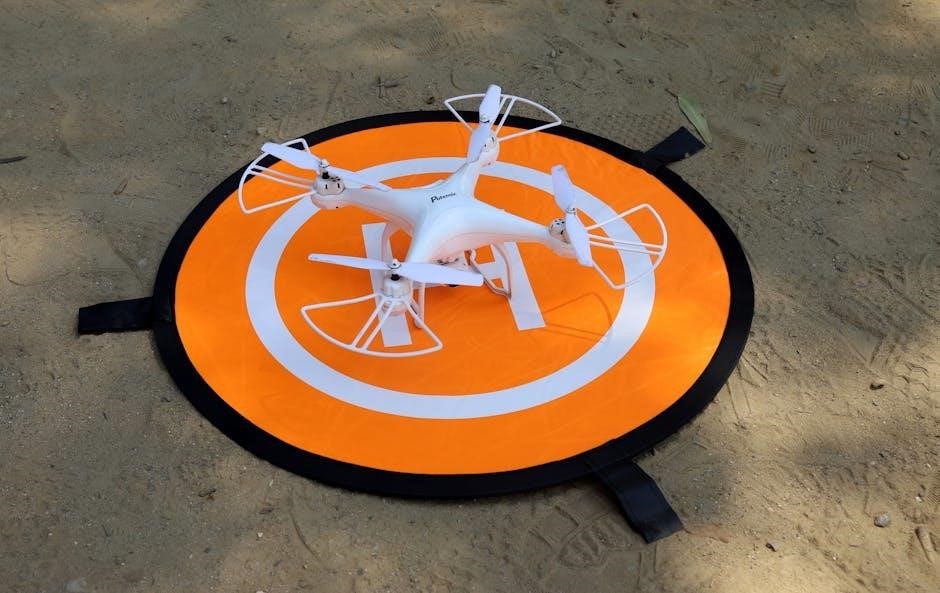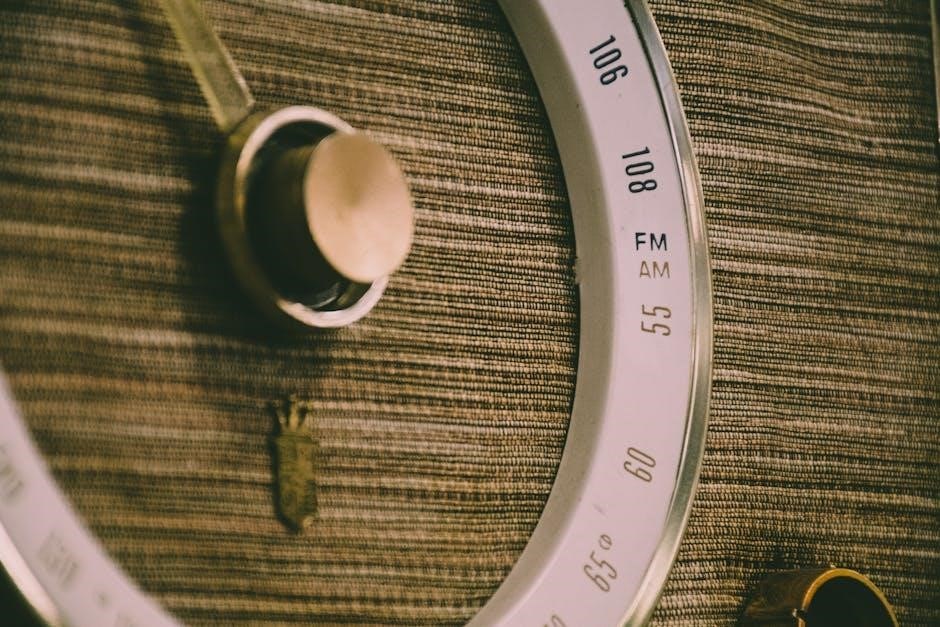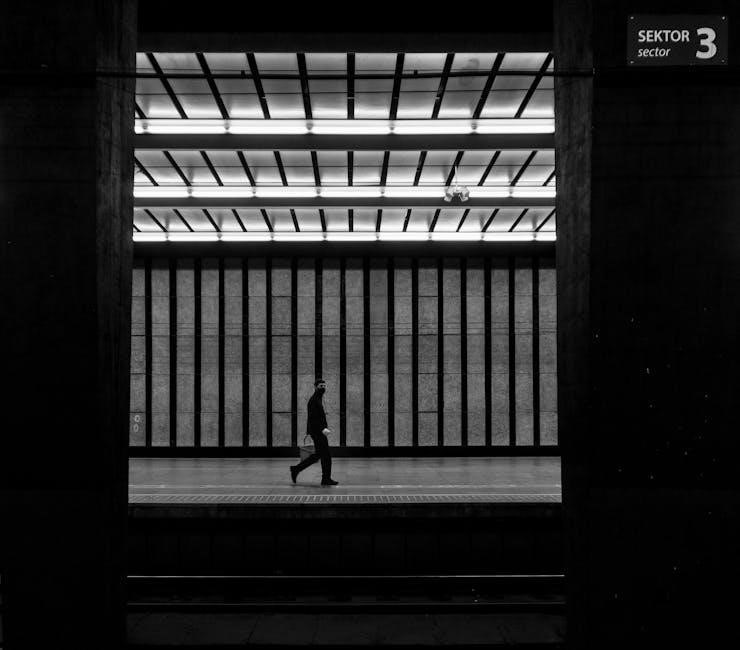boss loop station rc 3 manual
The Boss RC-3 Loop Station is a compact pedal-type recorder designed for guitar and bass players. It allows real-time audio recording and playback, enabling musicians to create layered sounds and enhance live performances. As part of Boss’s Loop Station series, the RC-3 is known for its user-friendly interface and versatility in musical applications.
1.1 Overview of the RC-3 Loop Station
The Boss RC-3 Loop Station is a compact, pedal-type audio recording device designed for guitarists and bassists. It offers real-time recording and playback capabilities, allowing musicians to create layered loops and enhance live performances. With its intuitive interface, the RC-3 is ideal for both beginners and experienced players. The device supports up to three hours of stereo recording and features built-in effects for creative sound manipulation. Its portability and robust design make it a versatile tool for practice sessions, rehearsals, and live gigs. The RC-3 is a popular choice among musicians seeking a reliable and feature-rich looping solution.
1.2 Key Features of the RC-3

The Boss RC-3 Loop Station boasts an array of impressive features tailored for musicians. It offers up to three hours of stereo recording time, with 99 onboard memory slots for storing loops. The device includes built-in effects like reverse, pitch-shifting, and tempo adjustment, allowing for creative sound manipulation. It supports real-time tempo control and sync capabilities for seamless loop integration. The RC-3 also features a USB port for importing and exporting loops to a computer. Its compact design and battery-powered operation make it portable and convenient for live performances. Additionally, the pedal provides a user-friendly interface with clear LED indicators and intuitive controls, ensuring easy navigation during recording and playback sessions.
1.3 Importance of the Manual for Optimal Usage
The manual is essential for unlocking the full potential of the Boss RC-3 Loop Station. It provides detailed instructions for operating the device, ensuring users understand its advanced features and functions. From connecting the pedal to navigating its intuitive interface, the manual guides musicians through setup and usage. It also covers troubleshooting common issues and maintaining the device for long-term performance. By following the manual, users can master recording, overdubbing, and loop management, as well as utilize built-in effects and tempo controls effectively. This comprehensive guide is indispensable for both beginners and experienced musicians, helping them achieve professional-quality sound and seamless live performances.

Device Features and Specifications
The Boss RC-3 Loop Station offers stereo recording, up to three hours of memory, and built-in effects for creative sound shaping. It operates on a 9-volt battery, ensuring portability and convenience for musicians on the go.
2.1 Built-In Effects and Processing Capabilities
The Boss RC-3 Loop Station is equipped with a variety of built-in effects to enhance your loops creatively. These include transpose, scatter, and vinyl flutter effects, allowing for dynamic sound manipulation. The effects can be applied to your loops in real-time, enabling you to experiment with unique textures and layers during performances. With the LOOP FX feature, you can toggle effects on and off seamlessly, adding depth to your music. The RC-3 also supports external pedals for additional processing, making it a versatile tool for both live and studio use. These features make the RC-3 a powerful companion for musicians seeking to expand their sonic possibilities.
2.2 Memory and Storage Options

The Boss RC-3 Loop Station offers generous memory and storage capabilities, allowing musicians to store and manage their loops efficiently. The device features 99 onboard memories, each capable of holding up to three hours of stereo recording. This provides ample space for storing multiple loops and performances. Additionally, the RC-3 supports external memory expansion via SDHC cards, enabling users to increase storage capacity as needed. The unit also allows for USB connectivity, making it easy to transfer loops to and from a computer. With its robust memory and flexible storage options, the RC-3 is ideal for both live performances and studio applications, ensuring that your creative work is always within reach.
2.3 Stereo Recording and Playback
The Boss RC-3 Loop Station supports high-quality stereo recording and playback, providing musicians with immersive sound reproduction. The device captures audio in 16-bit linear PCM format at 44.1 kHz, ensuring professional-grade quality. Stereo recording allows for a wider soundstage, making it ideal for capturing complex arrangements or layered performances. The RC-3 also features dedicated stereo input and output jacks, enabling seamless integration with other stereo-capable gear. This feature is particularly useful for live performances, where a rich and detailed sound is essential. With its robust stereo capabilities, the RC-3 enhances the creative possibilities for guitarists, bassists, and vocalists alike, delivering a dynamic and authentic listening experience.
2.4 Power Options and Battery Life
The Boss RC-3 Loop Station offers flexible power options to suit various performance needs. It operates on a single 9-volt alkaline battery, providing up to 7 hours of continuous use. For extended sessions, the device can be powered using an AC adapter, which is sold separately. To conserve battery life, the RC-3 features a Sleep mode that activates after ten hours of inactivity. This energy-saving function ensures that the battery remains efficient, even when the pedal is not in active use. With these power options, musicians can enjoy reliable performance whether rehearsing at home or performing live on stage.

Basic Operation and Navigation
The Boss RC-3 Loop Station features an intuitive interface for easy navigation. Connect your guitar or bass, press the pedal to record, and layer sounds effortlessly. Playback loops and overdub with precision, using the pedal controls for seamless performance. The device’s clear LED indicators guide you through recording, playback, and overdubbing modes, ensuring smooth operation during live or practice sessions.
3.1 Connecting the RC-3 to Your Setup
To connect the Boss RC-3 Loop Station, start by plugging your guitar or bass into the MONO INPUT jack. Next, connect the MONO OUTPUT to the clean channel of a high-quality amplifier, such as a Roland JC-120. For power, use a 9V battery or an external power supply. Additional inputs, like an auxiliary input, allow you to integrate external devices. Ensure all connections are secure to maintain sound quality. Refer to the manual for specific cable requirements and optimal setup configurations. Proper connectivity is essential for achieving the best performance and audio quality from the RC-3.

3.2 Navigating the Interface and Controls
The Boss RC-3 Loop Station features an intuitive interface designed for easy operation. The pedal includes a large, centralized loop control pedal and a display showing the current loop number. Buttons such as MEMORY UP/DOWN allow quick navigation between stored loops, while the LOOP FX button enables effects. The TAP TEMPO button is used to set the tempo, with extended press functionality for mode selection. The display provides visual feedback, such as a rotating indicator during recording and blinking during playback. These controls enable seamless switching between loops, effects, and tempo adjustments, ensuring a smooth and efficient workflow for musicians during live performances or practice sessions.
3.3 Setting Up for Recording and Playback
To set up the Boss RC-3 Loop Station for recording and playback, connect the MONO OUTPUT to a clean amp channel, such as a Roland JC-120. Plug your guitar or bass into the MONO INPUT. Press the pedal to start recording; the display will show a rotating indicator. Once recorded, press the pedal again to enter playback mode, indicated by a blinking display. Use the MEMORY UP/DOWN buttons to select loops and the LOOP FX button to add effects. Adjust levels using the OUTPUT LEVEL knob. For syncing, press the TAP TEMPO button to set the desired tempo. The RC-3 also features a sleep mode to conserve power when inactive for 10 hours.

Recording and Looping Functions
The Boss RC-3 Loop Station offers intuitive recording and looping functions, enabling real-time audio capture and layered sound creation. Its user-friendly design enhances live performances with versatile looping capabilities.
4.1 Starting a New Loop
To start a new loop on the Boss RC-3, press the pedal to begin recording. The LED indicator will flash, signaling the start of the recording process. Once you’ve played the desired phrase, press the pedal again to stop. The loop will automatically play back, and the LED will indicate the loop is active. You can then choose to overdub by pressing the pedal once more, allowing you to layer additional sounds over the existing loop. This function is essential for building complex compositions and experimenting with live performances. The RC-3’s intuitive design makes it easy to start and manage loops, ensuring a seamless creative experience.
4.2 Overdubbing and Layering
Overdubbing on the Boss RC-3 allows you to add new layers to an existing loop, creating a richer and more complex sound. To overdub, press the pedal once while the loop is playing. The LED will turn yellow, indicating overdub mode is active. Play your additional phrases, and the RC-3 will record them over the original loop. You can repeat this process multiple times to build up your sound. Layering is a powerful feature for musicians, enabling the creation of intricate compositions during live performances or practice sessions. The RC-3’s intuitive controls make it easy to experiment with overdubbing and layering, enhancing your creative potential.
4.3 Syncing Loops and Tempo Matching
Syncing loops and tempo matching on the Boss RC-3 ensure seamless integration of your recorded phrases. To sync loops, press the TAP TEMPO button and tap the pedal to set the desired BPM. The LED will flash to confirm the tempo is set. When recording a new loop, the RC-3 automatically matches the tempo of the existing loop, maintaining rhythmic consistency. For external synchronization, use the tempo from an external device via MIDI. The RC-3 also features a quantize mode, which corrects loop lengths to match the set tempo, minimizing timing errors. This feature is invaluable for creating tight, professional-sounding performances and maintaining synchronization during live shows or practice sessions.

Advanced Features and Techniques
The RC-3 offers advanced features like Loop FX, rhythm parts, and Tap Tempo for dynamic performances. Explore creative effects, sync loops, and organize phrases for professional results.
5.1 Using the Loop FX for Creative Sounds
The RC-3’s Loop FX feature unlocks a variety of creative possibilities. Musicians can apply effects like Reverse, Phaser, and Wah to their loops, adding unique textures to performances. These effects can be activated during playback or overdubbing, allowing for real-time experimentation. The Loop FX function enhances the versatility of the RC-3, making it ideal for both live gigs and studio sessions. By integrating these effects, users can craft distinctive sounds that stand out, showcasing the full potential of the Loop Station series. This feature is a powerful tool for artists seeking to expand their musical expression and push the boundaries of their performances.
5.2 Managing and Organizing Loops
Managing and organizing loops on the Boss RC-3 is straightforward and efficient. The device offers 99 onboard memory locations, allowing users to store and categorize their loops for easy access. Loops can be imported or exported via USB, making it simple to back up or transfer audio phrases. Organizing loops into folders or playlists ensures that performances remain streamlined, especially during live gigs. Additionally, users can assign loops to specific footswitches, enabling quick access to their favorite phrases. This feature enhances creativity and efficiency, making the RC-3 a versatile tool for both studio and stage use. Proper organization ensures that musicians can focus on their performance without interruption.
5.3 Utilizing the Tap Tempo Function
The Tap Tempo function on the Boss RC-3 Loop Station enables precise tempo setting for loops. Press the TAP TEMPO button multiple times to set the desired tempo, ensuring synchronized playback. This feature is ideal for maintaining consistent timing during live performances. Users can adjust the tempo range to suit various musical styles, enhancing flexibility. The RC-3 also allows for seamless integration with external rhythm machines, further expanding creative possibilities. By utilizing Tap Tempo, musicians can focus on their performance, knowing their loops will stay in perfect sync. This function is a valuable tool for achieving professional-sounding results in both studio and live settings.

Troubleshooting and Maintenance
Regularly clean the pedal and connections to ensure optimal performance. Check the loop indicator for issues and manage battery life. Address common problems promptly.
6.1 Common Issues and Solutions
Common issues with the Boss RC-3 include loop indicator malfunctions, audio glitches, and pedal response problems. To resolve these, restart the device, clean connections, and ensure proper power supply. For loop indicator issues, check the tempo settings or reset the device. Audio glitches may result from faulty cables or low battery levels. Replace cables or charge the battery if necessary. If the pedal is unresponsive, ensure it is clean and free from debris. For persistent problems, consult the manual or contact Boss support for assistance. Regular maintenance, such as cleaning the pedal and updating firmware, can prevent many issues and ensure optimal performance.
6.2 Updating Firmware and Software
To update the firmware and software for the Boss RC-3 Loop Station, visit the official Boss website and download the latest firmware version. Use a USB cable to connect the RC-3 to your computer. Install the Boss Tone Studio software to manage the update process. Ensure the RC-3 is in update mode by holding the appropriate button while powering on. Follow the on-screen instructions in the Tone Studio software to complete the firmware update. Avoid disconnecting the USB cable during the process to prevent errors. After the update, restart the RC-3 to apply the changes. If issues arise, refer to the manual or contact Boss support for assistance.
6.3 Cleaning and Maintaining the Device
Regular cleaning and maintenance are essential to ensure the Boss RC-3 Loop Station performs optimally. Use a soft, dry cloth to wipe down the exterior and controls, removing dirt and grime. For stubborn marks, a slightly damp cloth with mild detergent can be used, but avoid harsh chemicals; Clean the footswitches by wiping them with a dry cloth, ensuring no moisture seeps inside. Avoid exposing the RC-3 to extreme temperatures or humidity. Store the device in a protective case when not in use to prevent damage. Check the battery compartment periodically for corrosion and ensure all inputs and outputs are free from dust. Proper care will extend the lifespan and reliability of the RC-3.

FAQs and User Tips
- How to start? Press the pedal to record and layer sounds.
- Overdub by holding the pedal during playback.
- Use battery power for portability or AC for extended sessions.
- Organize loops in memory for easy access.
7.1 Frequently Asked Questions
- How do I start recording a loop? Press the pedal once to begin recording. The indicator will flash during recording.
- Can I overdub over an existing loop? Yes, press and hold the pedal during playback to enable overdubbing.
- How long can loops be? The RC-3 supports up to 3 hours of stereo recording.
- Is the RC-3 battery-powered? Yes, it uses a 9-volt battery and has an optional AC adapter.
- How do I sync loops? Use the TAP TEMPO button to set the desired tempo for synchronized playback.
7.2 Pro Tips for Getting the Most Out of the RC-3
- Experiment with Loop FX: Use built-in effects like transpose or loop phrases to create unique sounds during performances.
- Organize Loops Efficiently: Use memory slots to categorize and quickly access loops for seamless transitions during gigs.
- Master Tap Tempo: Adjust tempos on the fly to sync loops with your band or backing tracks for tighter performances.
- Layer Overdubs Strategically: Build complex sounds by adding layers gradually, ensuring each addition enhances the overall sound.
- Connect to Quality Amps: Pair the RC-3 with high-quality amps like the Roland JC-120 for crystal-clear playback.
- Update Firmware Regularly: Stay updated for new features and performance improvements to keep your RC-3 running at its best.
- Explore External Effects: Integrate external pedals for expanded tonal possibilities and creative loop manipulation.
The Boss RC-3 Loop Station is an exceptional tool for musicians seeking to elevate their performances and creativity. With its intuitive design, robust features, and versatility, it empowers guitarists and bassists to craft intricate loops and layered sounds effortlessly. From beginners to seasoned professionals, the RC-3 offers endless possibilities for experimentation and musical expression. By mastering its functions and exploring its advanced capabilities, users can unlock the full potential of this powerful loop station; Whether for practice, live gigs, or studio work, the RC-3 remains a reliable and inspiring companion for any musician looking to push their creative boundaries.

